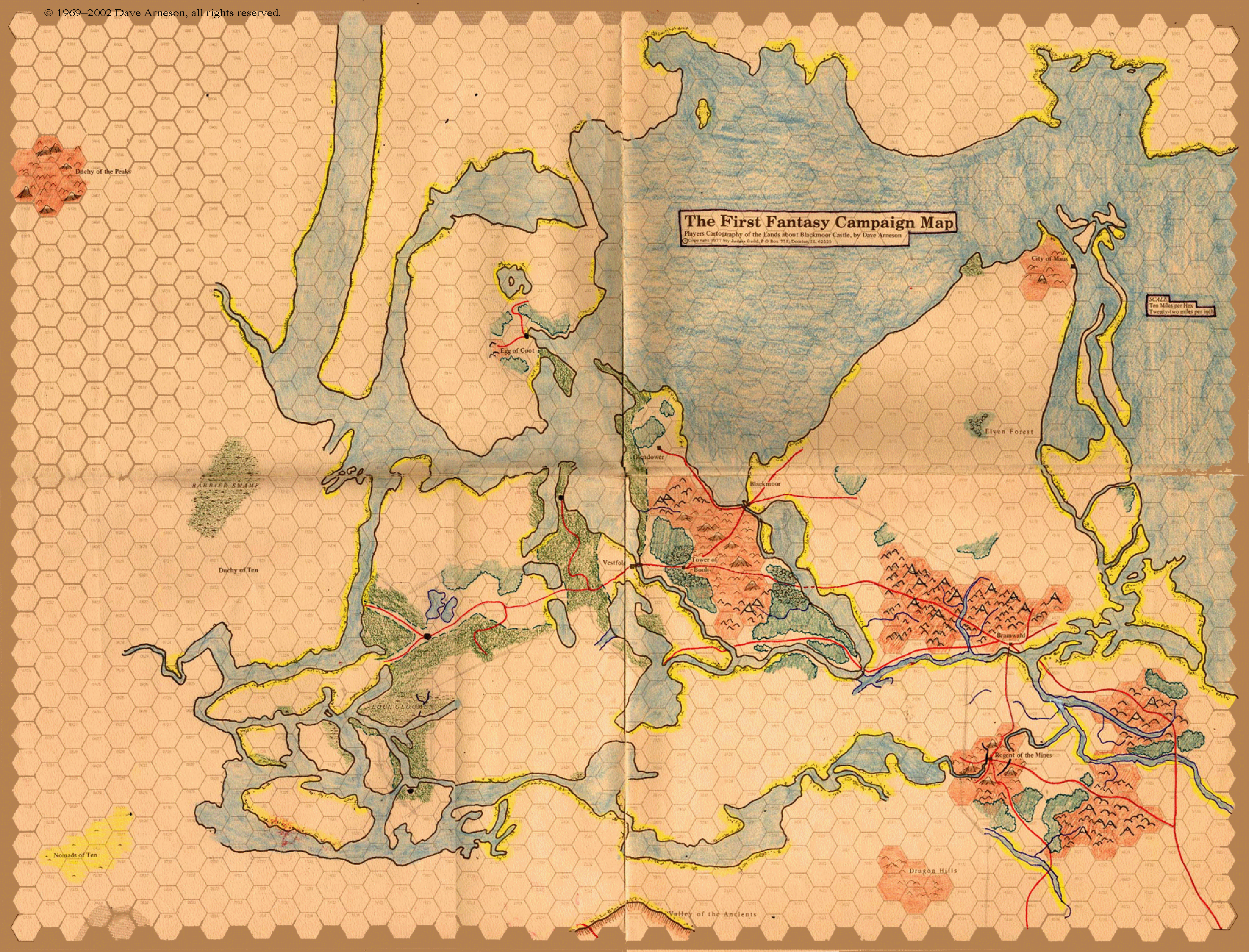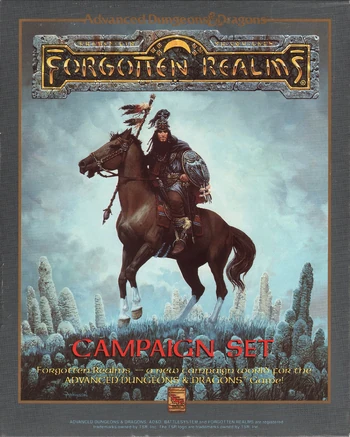
With the release of the new Eberron hardback from Wizards of the Coast, I thought it might be time to talk about Eberron. Eberron is a Johny-come-lately to the campaign settings, being the winner of a 2002 campaign setting contest. Its principal author Keith Baker remains a font of new gaming ideas, I try to follow his blog regularly. Most of our knowledge of Eberron comes from a series of hardbacks from the 3.5 edition era. When I looked at my collection I have eleven, but checking the list on the internet there are more. I did not collect any of the 3.5 adventures interestingly there are fewer adventures than there are hardbacks.
The first hardback the "Eberron Campaign Setting" published in 2004 is the starting point for Eberron. Being a 3.5 book the first 128 pages are filled with race, classes, prestige classes, magic, and equipment. There is also a section on "heroic actions" something new for Eberron as if 3.5 feats weren't enough to keep track of. New concepts include: Dragon marks a magical birthmark, and the religions of Eberron: The Silver flame, The Sovereign Host, The Dark Six, The Blood of Vol, The Cults of the Dragons Below, The Path of Light, and the Undying Court. Most inhabitants of Eberron worship pantheons rather than single gods. It is not until chapter seven (pages 129-226) that we actually get into the setting itself. Eberron has five major continents Khorvaire, Frostfell, Xen'drik, Argonnessen, and Sarlona as well as the large island of Aerenal. Most of the description in this book is devoted to Khorvaire. Khorvaire is split into five major nations: Aundair, Breland, Cyre, Karrnath, and Thrane. However, there are numerous freeholds, debatable lands, and an entire goblin kingdom as well. The setting timeline places Khorvaire a point where the nations are recovering from an exhausting struggle between them to try and recreate the single continent-spanning kingdom of Galifar. With thirteen great houses, all specially marked with birthmarks of power (dragon marks), vying for power amongst the five nations in a shakey cold war detente there is more than enough political intrigue to last several entire campaigns without ever leaving Khorvaire. The island of Aerenal gets four pages and is the island of the elves. The rest of the continents do get a brief description on the next four pages Argonessen is the land of dragons, not many who go the return. Frostfell is a frozen wasteland. Sarlona is the original homeland of humans and controlled the empire of Riedra, although the hidden mountain fortress of Adar still stands against Riedra (Sarlona gets its own book later). Xen'drik although once home to the kingdom of the Giants is now jungle-covered ruins (Xen'drik also gets its own book). Khyber the Underdark of Eberron also gets half a page. Chapter eight is devoted to organizations: the dragon marked houses, faiths, cults, and other movers and shakers. Chapter nine is some tips for running an Eberron campaign. Chapter ten is magic items. Chapter elven is monsters, most notable are the Halfing riding raptors and the Quori an outsider race responsible for the creation of other monsters. Chapter twelve is a short adventure to run for your players. At 320 pages total it is a decent size book but only about a third of it is what I would call campaign setting.
"Five Nations" (2005) and "The Forge of War"(2007) detail more about Khorvaire. "Sharn: City of Towers" (2004) details the largest city on Khorvaire and Breland's main port (it also includes a music CD I have never listened to). "Eberron Explorers Handbook" (2005) details numerous adventure sights throughout Eberron. "Secrets of Sarlona" (2007) details that continent further with more details on Riedra and Adar, as well as adding the shifter clans of the Tundra wastes, and mage ravaged Skykarn. "Secrets of Xen'drik"(2006) after introducing Stormreach as the port of entry adds some interesting ruins to poke through and explore and encounters to throw in while running Xen'drik as an exploration sandbox. Stormreach gets its own book "City of Stormreach" in 2008. I also own "Magic of Eberron" (2005), "Faiths of Eberron" (2006), and "Dragonmarked" (2006) but these are more player-facing books chock full of prestige classes and feats so favored by the third edition writers of the time. Eberron books I do not own include "Races of Eberron" (2005, this one might just be misfiled), "Players Guide to Eberron" (2006, not big on players guides as a rule), "Dragons of Eberron" (2007, I probably should pick this one up as it has additional information on Argonnessen), and "An Adventures Guide to Eberron" (2008 another player guide). Although there were two Living Eberron campaigns, I only remember playing one adventure where the Khorvarian Nobility snubbed us and then sent us off to pilot a dangerous experimental machine for traveling underground. Everyone in our gaming group returned to the more familiar Living Greyhawk fairly quickly.
I did purchase the fourth edition Eberron books when they appeared in 2009. The war forged race and the artificer class were both popular in my gaming group. I don't think I more than glanced at the campaign guide most of it a rehash of the third edition books.
I didn't purchase the online fifth edition Eberron .pdf and have not played any of the Eberron adventurers league modules which have been appearing over the last year. I received for my Birthday in November the fifth edition Eberron book. The Introduction is a short explanation of how Eberron is different from stock D&D. Chapter one goes through new character and race options. Most races have some spin on their player's handbook descriptions. Several races are re-introduced to the fifth edition including Changelings (doppelgangers), Kalashtar (humans bound by Quori spirits), Shifters (lycanthropes), and Warforged. Dragonmarked characters are treated as subraces of their race and replace several traits. "House agent" is added as a background. Artificer is a new spell casing class capable of manufacturing his own magic items. The chapter ends with a discussion of Group Patrons for your adventuring crew. Chapter two is a Gazetteer of Khorvaire, mostly a rehash of previously published information. There is a brief discussion near the end of the other continents (including the continent of Everice at the south pole even though it is lumped together with Frostfell as a frozen wasteland). The very last section of the chapter discusses the faiths of Khorvarie. I think this is a better discussion than the original "Eberron Campaign Setting" although not as comprehensive as the "Faiths of Eberron". Chapter 3 is about Sharn, the City of Towers. Chapter 4 Building Adventures contains adventure hooks, locations and even a complete adventure at the end of the chapter. Chapter 5 is about magic items. Most unique to Eberron are dragon shards. These crystals serve as components in the construction and powering of other magic items (although the rules here are a bit vague). Chapter 6 (the final chapter) is a bestiary updating monsters to the fifth edition rules, as well as providing NPC versions of the new Eberron races and classes.
Although this review has opened my eyes to the possibilities of Eberron, it still lags behind Greyhawk and the Forgotten realms in my esteem. I do think covering the number of continents it attempts is a bold move, giving something for everyone. The steampunk gothic urban of the main continent Khorvaire is not my cup of tea. Xen'drik is set-up as a jungle crawl similar to Forgotten realms Chult, but I found the book lacking in places of interest. Sarlona has a strong "Darksun" feel, which could work well. Argonnessen seems to have a similar vibe to the second edition "Council of Wyrms" box set, both being dominated by powerful dragons. Eberron is definitely full of ideas worth stealing. I do not like dragon marks as they seem both elitist, in that when acquired at the very start of play they lock the player's allegiance to a specific faction and disruptive, in that those with different marks are forced into opposing factions. The Changling and Shifter races are good options for those desiring to play doppelgangers and lycanthropes as characters. I have enjoyed both the Warforged race and the Artificer class. I look forward to playing their updated versions for fifth edition dungeons and dragons. I have yet to actually play in the Eberron setting (except for that one unimpressive "living" Eberron session). However, every time Keith Baker blogs about it I feel like I am "missing out". Perhaps the Eberron of Keith Baker's imagination is stronger than the rapidly published ensemble cast of authors 3.5 era splatbooks. I hope that Keith Baker will get the chance to reveal more of Eberron in the future.
P.S. How could I miss an entire kingdom blowing up in a magical explosion? Cyre is now Mournland, a magically radiated wasteland. Here an explanation of Eberron from Keith Baker himself here.






